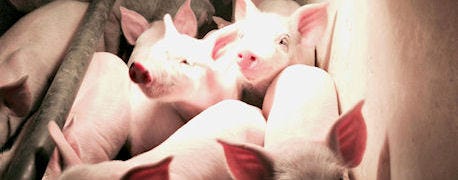
Porcine Epidemic Diarrhea virus has impacted about 60% of the U.S. hog breeding herd, 28% of the Mexican herd, and it is beginning to develop in Canada, according to Rabobank's latest report.
"In the U.S. we see the outbreak of PEDV causing a significant shortfall in the availability of market hogs in 2014 to the tune of 12.5 million hogs or 11% of annual slaughter," explained Rabobank Analyst William Sawyer. "Given the ever rising number of PEDV cases reported, coupled with a six-month aerate lifecycle, the months of August through October are likely to be the tightest for processors where slaughter could decline by 15% to 25% against 2013 levels.

PEDv affecting hog numbers: USDA reports hog numbers down 3% from one year ago. As a result of PEDv currently on farms, the numbers will continue to decrease through the spring and summer.
"If the virus continues at its current rate, the shortfall to US slaughter in 2014 could be as much as 15 million hogs," he says.
Related: PEDv Preparedness Starts with a Veterinary Consultation
The USDA's quarterly hog report, released on March 28, showed United States hog inventory down 3%. Numbers could be down quite a bit more next quarter as more and more cases of PEDV begin to affect weaning numbers on farms hit with the virus.
PEDV is already affecting the markets. Prices for fat hogs are at an all-time high. Farms that have not yet experienced the virus could possibly realize margins of more than $60 per head. According to Rabobank, this is the highest calendar year average that they have seen in their 40-year record.
Related: U.S. Veterinarian Recaps PEDV-Feed Impacts on Producers
Poultry, however, is primed to pick up where pork is leaving off. With an estimated 6% to 7% drop in pork production and a decline of close to 6% in U.S. beef, this provides an excellent opportunity for the poultry industry to grab the market. Because of this, Rabobank is expecting chicken prices and margins to climb this spring and summer but U.S. chicken production needs to rise by 8% to 9% for the potential demand to be filled.
About the Author(s)
You May Also Like




